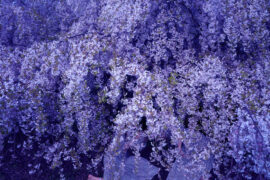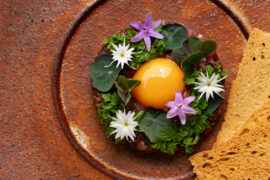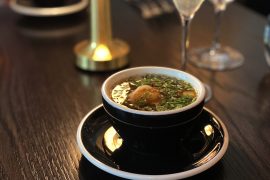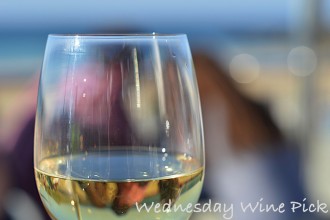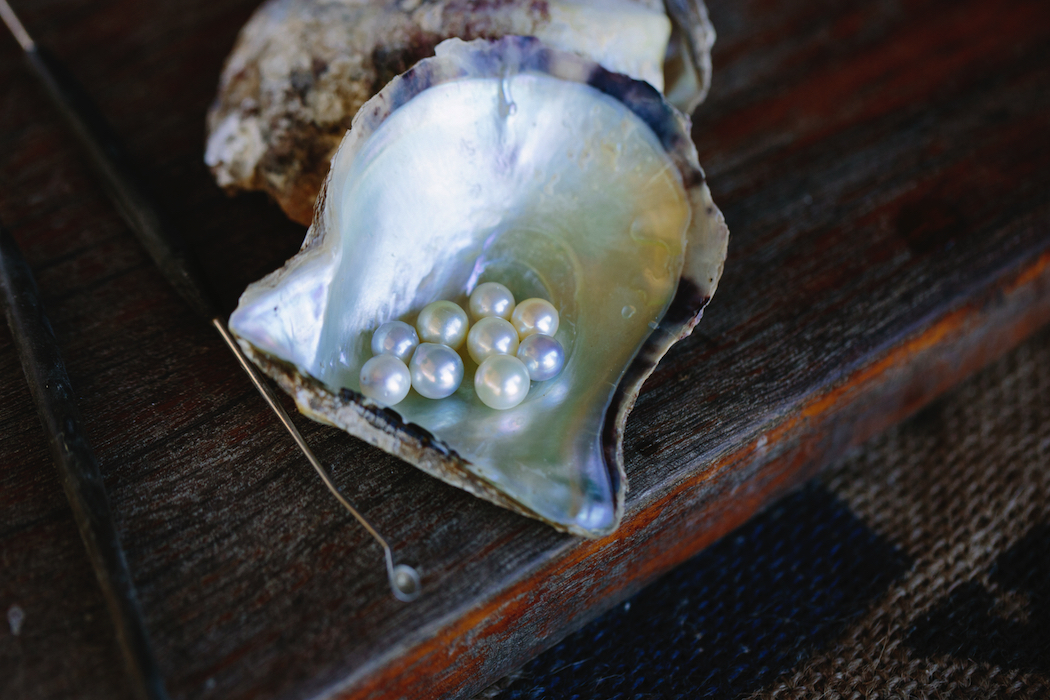
I’ve eaten a lot of oysters during my life, but I’ve never found a pearl. It wasn’t until I visited the Broken Bay Pearl Farm that I knew the reason why. Located on a serene stretch of the Hawkesbury River at Mooney Mooney north of Sydney, Broken Bay is the only pearl farm in New South Wales.
It was at the farm’s cleverly named Shellar Door that I discovered — among other fascinating snippets – it was extremely unlikely that any of the varieties of oyster I’d been eating would ever contain a pearl. I have never eaten an Akoya oyster and before discovering the joys of the NSW Central Coast courtesy of Destination Central Coast, I never even knew Akoya oysters existed in Australia.
Generally found in waters of the Indo-Pacific region, the Pinctada fucata or Akoya oyster occurs naturally in Australia. Until recently, it had not been made available commercially for food consumption. It is, however, ideal for growing cultured pearls. Currently, Japan and Australia are the largest producers of cultured pearls.
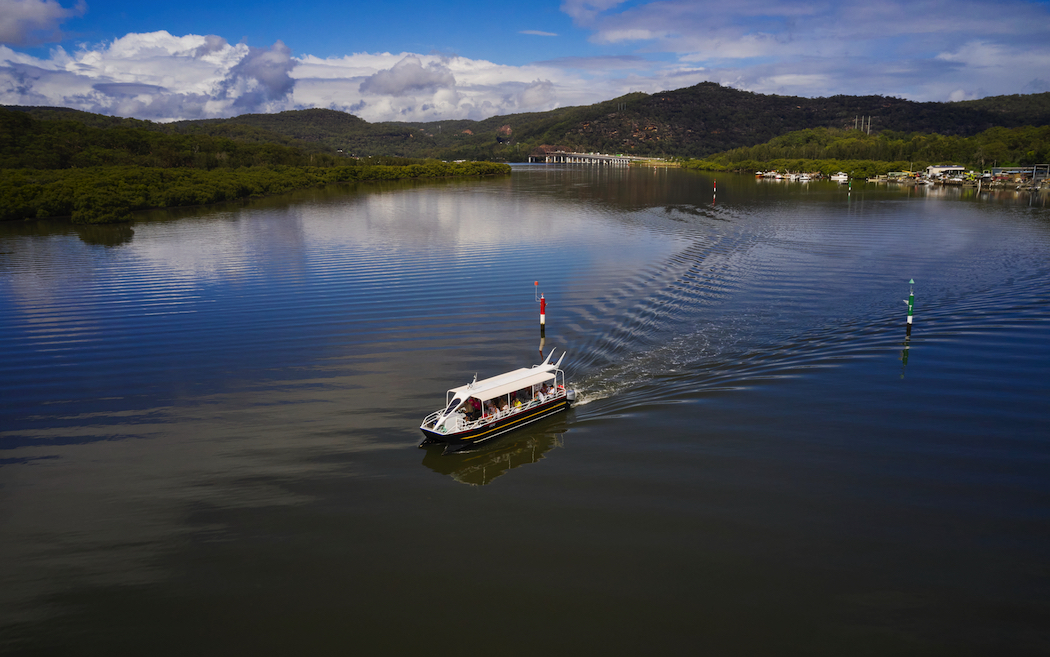
When the Akoya oysters are large enough, at about 2 years of age, they are seeded, meaning that a small bead of shell is inserted into the oyster, an operation that requires training and skill. To protect itself against this irritant, the oyster secretes a substance called nacre which covers the bead and eventually becomes the pearl.
The oysters are placed into baskets and back into deep water and both the oyster and the pearl keep growing for up to another 2 years. This process can occur naturally, in which case we are talking about what are called ‘natural’ pearls. Sometimes the oyster will just spit out the irritant, so no pearl grows.
The Akoya oyster tends to produce a pearl with more uniform roundness and higher lustre than other oysters, making it appear more brilliant in the light. But with the Akoya it’s not just the pearl itself that is prized. The nacre also builds up on the inside of the oyster, giving the shell an iridescent shine reflecting colours of blue, green, red and pink. This is mother of pearl, a very hard substance used in the making of jewellery, ornaments and even furniture and musical instruments.
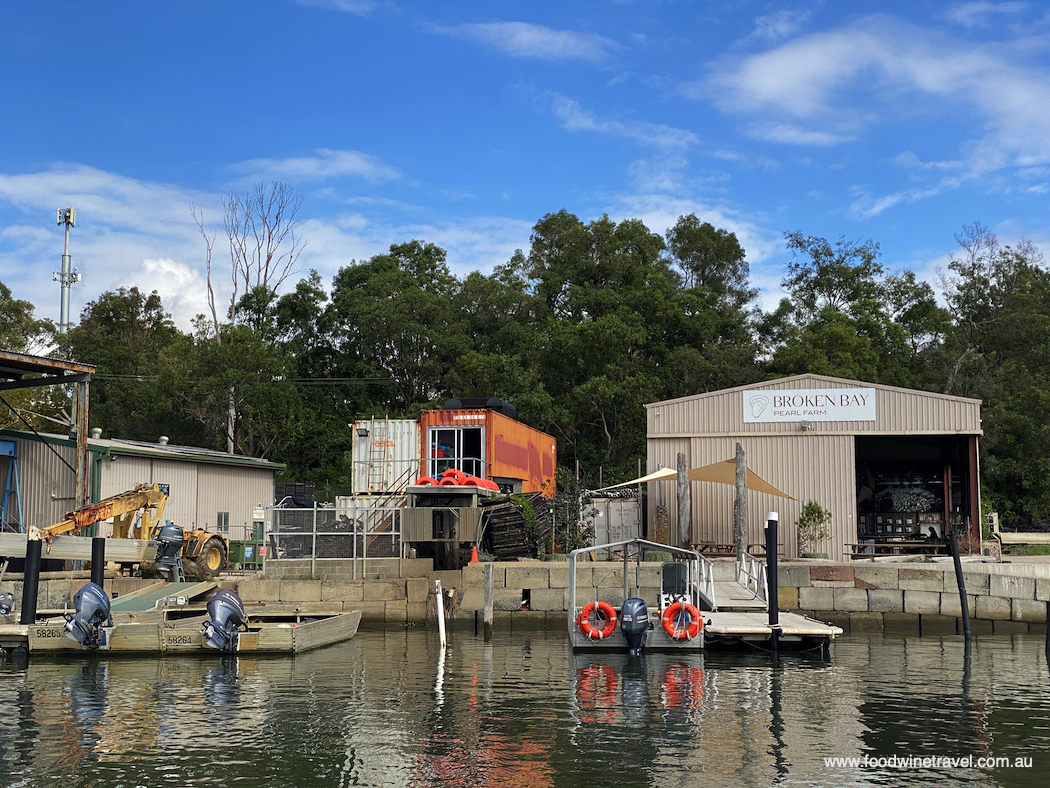
Most of the oysters consumed in Australia are tidal and therefore out of the water for part of the day depending on the tides. The Akoya lives in deeper water and is constantly submerged. But like all oysters, it takes on the elements of its location, whether it’s the ratio of salt and fresh water, the minerality of the water, or aspects of the environment, as well as the type of plankton or algae it is consuming.
With wine this effect is called terroir but with oysters it’s called merroir. All these factors along with the weather conditions can give rise to variations in size, quality and even color, of the oysters and the pearls. The 2024 harvest is the first at Broken Bay Pearl Farm since 2020 when very heavy floods, meaning too much fresh water, killed seven or eight million oysters.
You may think I’m giving you some pearls of wisdom here but in fact I’m passing on the information shared with us in a Secrets of Pearling presentation before we boarded a boat and headed up river to the oyster leases. During this fascinating talk, we learnt about the art of cultured pearls and the history of pearling in Australia. A glorious sunny day and the smooth waters of the Hawkesbury made this cruise memorable even before we got to the oyster leases.
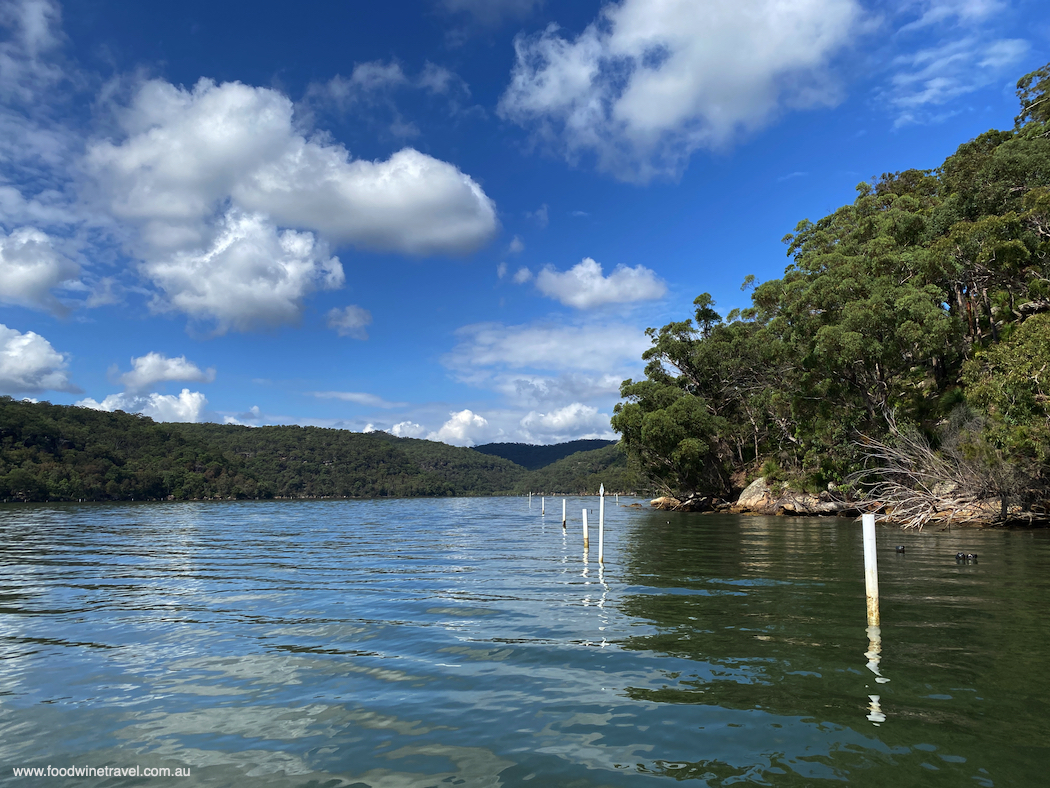
As we sail past Spectacle Island, our skipper relates the story of what was once thriving and vibrant Aboriginal settlements all along the river and he points out the location of caves that were once inhabited. We sail past Dangar Island and under the heritage-listed Hawkesbury River railway bridge. Next to it are the remains of a railway bridge from 1889 which sank into the mud. We’re told that ‘Mooney’ actually means mud. Say it twice and you’ve got lots of mud which is probably why the original bridge sank.
When we arrive at the oyster leases, the skipper pulls up a net of oysters and cleans off the barnacles, an operation that needs to take place every 4 weeks. Such a laborious process is one of the reasons, he tells us, that pearls are so expensive.
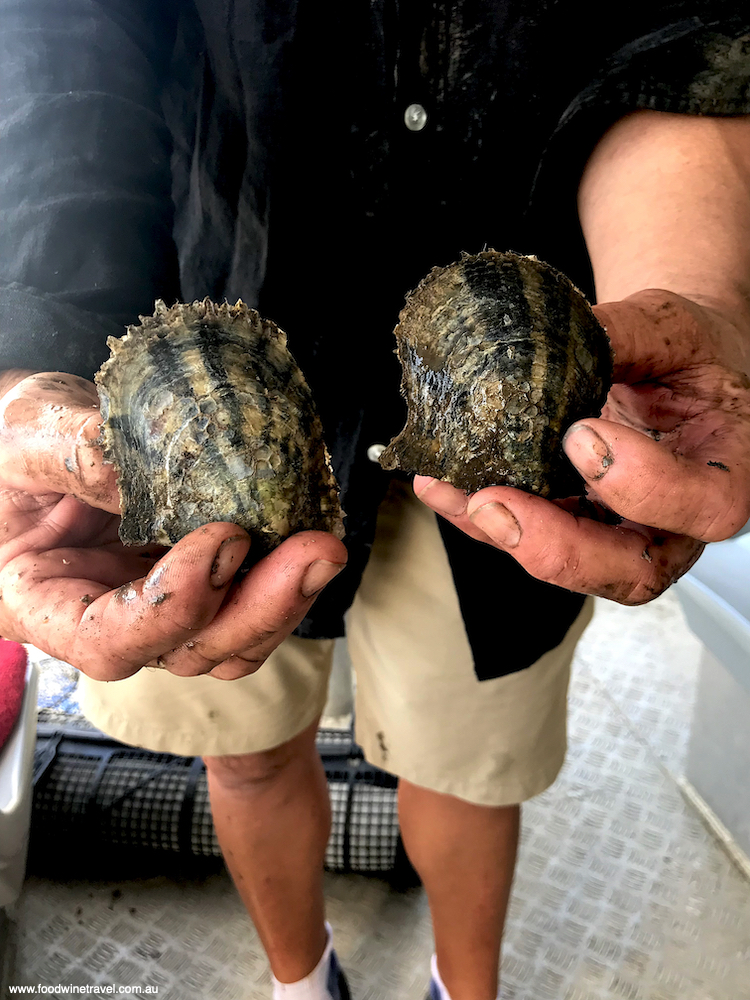
Rose and Ian Crisp started the pearl farm here in 2003 after discovering the Akoya oyster growing amongst their farmed Sydney Rock Oysters. Third-generation pearl farmer James Brown subsequently came on board, bringing the farm under the umbrella of Pearls of Australia, along with Cygnet Bay Pearl Farm in Western Australia.
The skipper on our cruise has a bonus for us because apart from sailing close to Dangar Island and giving us the low down on island life and the real estate, he takes us to a place not normally included on the tour. At Green Point we see aboriginal rock carvings including a fish pointing upwards, indicating that it was a good fishing spot. The skipper also points out Eagle Rock, so named because the rock formation resembles an eagle’s head. These are sights that are not easily appreciated except from the water.
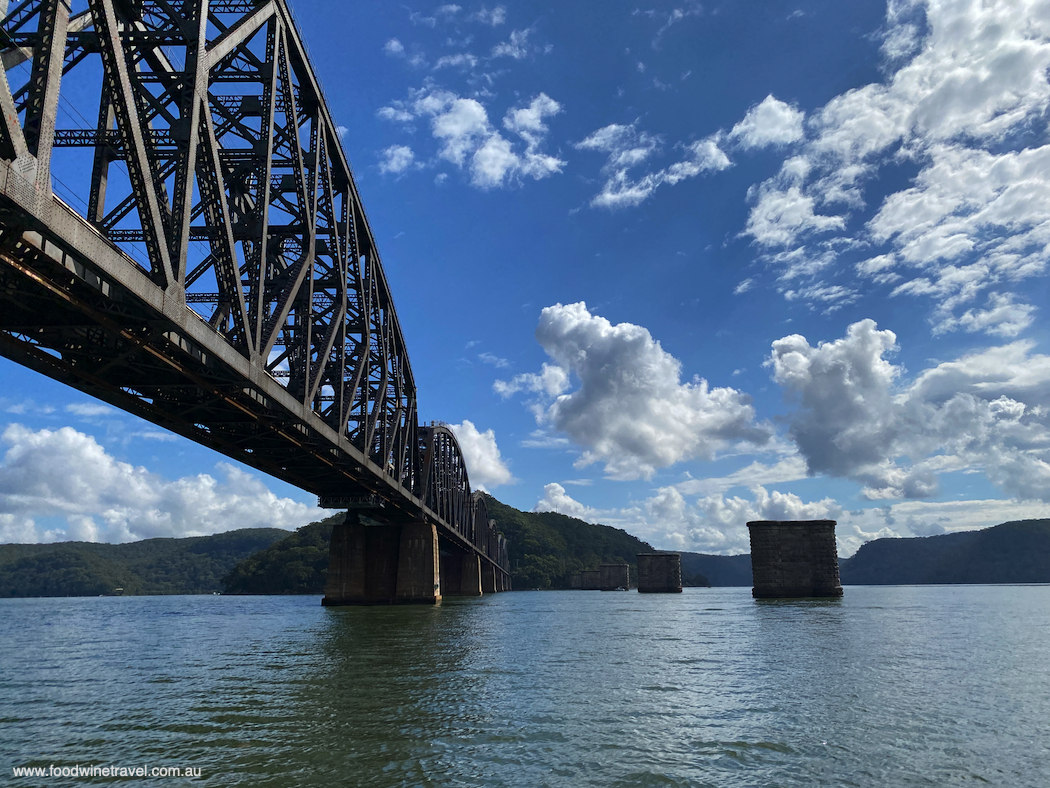
Back at the Shellar Door, we enjoy another presentation, this time in the Pearl Grading Room where we learn how pearls are graded according to colour, lustre and size. Pearls of different shapes are suitable for different forms of jewellery, with the top grade usually making up the most beautiful and expensive necklaces. It takes a long time to get enough pearls of the same size and quality to make a pearl necklace ready to glamorize any neck.
It’s easy to understand why this jewellery can be so expensive, but at Broken Bay there is a wide selection to suit most budgets. In a testament to their quality and reputation, most of their high-end customers are from overseas, mainly the United States.
There is much to see and do on the NSW Central Coast but the jewel of them all is the Broken Bay Pearl Farm with its various tours, experiences and dining options. You can do a guided tasting and shucking demonstration or enjoy a grazing lunch with freshly shucked local oysters. Only about 15 minutes away is Saddles at Mount White, one of the first restaurants to have Akoya oysters on the menu. It’s a picturesque location with restaurant, garden centre and gift shop. You might not get there, though, because you might just spend the whole day at Broken Bay Pearl Farm captivated by the luminescence.
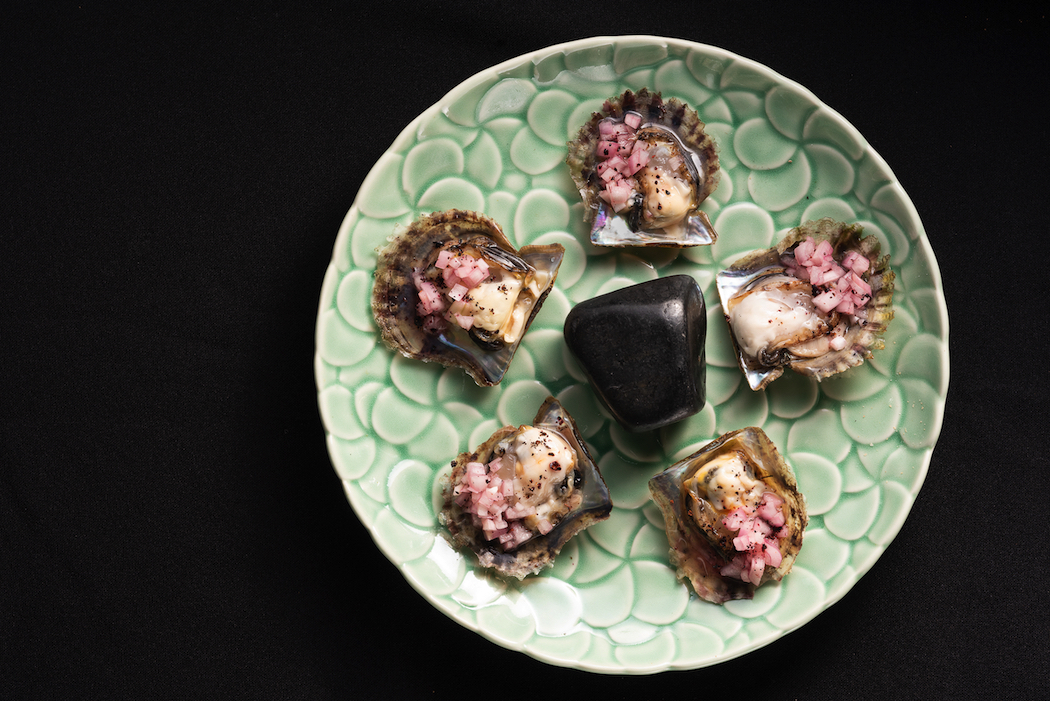
If you go:
Broken Bay Pearl Farm Shellar Door
12 Kowan Rd, Mooney Mooney NSW
Australia
Tel: +61 (0)488 361 042
www.pearlsofaustralia.com.au
With thanks to Destination Central Coast for hosting our visit to Broken Bay Pearl Farm. The first two photos and the last photo were supplied by Destination Central Coast and used with permission. Other photos are © FoodWineTravel
If you enjoyed this story, you might also like these stories: Six Reasons To Visit The New South Wales Central Coast and The Beachcomber Hotel & Resort, Toukley, NSW Central Coast.

